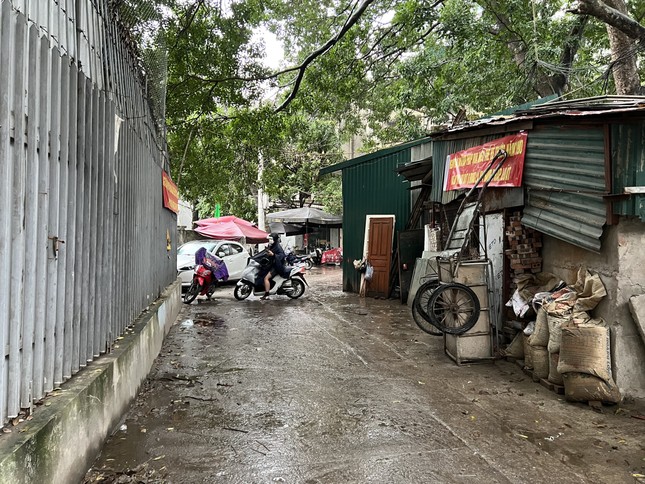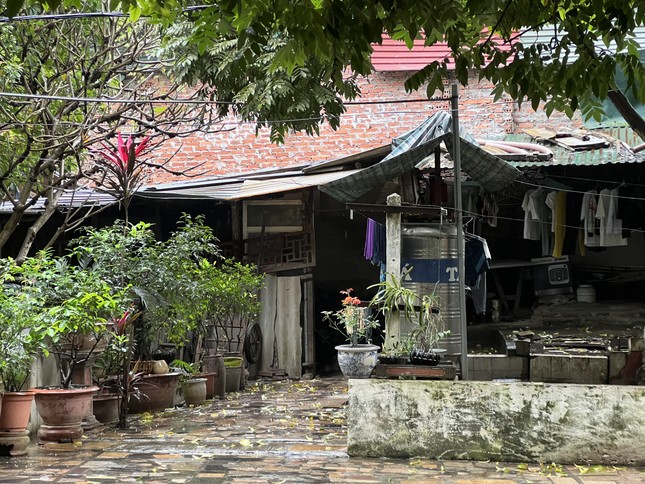The People’s Committee of Thanh Xuan Trung ward has recently organized a conference to disseminate the implementation of land acquisition for the renovation of the historical relic site Go Dong Thay.
At the conference, Mr. Le Hong Thang, Vice Chairman of the People’s Committee of Thanh Xuan district, stated that during the implementation process from 2021 until now, the residents have raised issues in four groups. The first group is related to the historical relic site Go Dong Thay. In 1990, the Ministry of Culture, Sports and Tourism recognized the relic but did not define its boundaries. The second group is about the legal basis for the approval of investment projects by Thanh Xuan district. The third group is about the compensation process for land acquisition by the district and ward governments. The fourth group is about the compensation policy.
According to the leadership of Thanh Xuan district’s People’s Committee, the district has issued many decisions to resolve residents’ complaints and organized multiple dialogues regarding residents’ opinions. Additionally, the Hanoi People’s Court has accepted the cases filed by 10 households and will organize a dialogue session this week.

Temporary houses and solidly constructed houses around the Go Dong Thay relic site
Regarding the project information, Mr. Thang mentioned that in the complaints and suggestions, residents stated that they have been living in the area since the 1960s and 1970s, with some families living there for three or four generations. However, the district has reviewed various documents, including the 1994 drawn map at a scale of 1/200 handed over in 1996, the 1996 QH-1 map by the Relic and Scenic Area Management Board, the 1998 current situation map by the Command of Military Zone 3, and the 2008 current situation map by the State-owned MTV Technical and Land Administration Company of Hanoi… Based on the available records, there is no information about households residing in the project area before 1993.
Regarding the dozens of solidly constructed buildings appearing around the protected area of the Go Dong Thay relic site without being dealt with by the authorities, according to the investigation by Tuoi Tre (Youth) newspaper, the reason is the loose management of the local authorities. In 2016, the Thanh Xuan district’s People’s Committee issued conclusions on inspecting the implementation of land management and construction order at the Go Dong Thay relic site in Thanh Xuan Trung ward.

The Thanh Xuan district’s inspection team identified many violations related to the leadership of the Construction Inspection Team and the People’s Committee of Thanh Xuan Trung ward
The inspection team determined that illegal construction at the Go Dong Thay site had been taking place for a long time: From 2008 to 2016, there were 189 structures (93 additional structures). In the project implementation area alone, there were 132 structures (11 new encroachments and 31 raised-level structures). The responsibilities lie with Ms. Tran Thi Thanh Binh – Chairman of the People’s Committee of the ward from 2012 to 2014; Mr. Nguyen Huu Tho – Chairman of the People’s Committee of the ward from 2014 to 2016; Mr. Trinh Ba Uy – Chief of the Construction Inspection Team in 2012; Mr. Tran Trong Khang – Chief of the Construction Inspection Team; and the leader of the Construction Inspection Team from 2013 to 2016…
The Go Dong Thay area used to be part of the Cự Chính – Nhân Mục village, also known as Ke Moc, consisting of 12 villages. At the end of 1426, during the battles to besiege and liberate the Eastern Gate (present-day Hanoi) from the rule of the Ming Dynasty, the Lam Son volunteer army (Thanh Hoa) led by Le Loi achieved the initial victory at the Nhan Muc bridge, annihilating a large number of Ming forces stationed here.





































